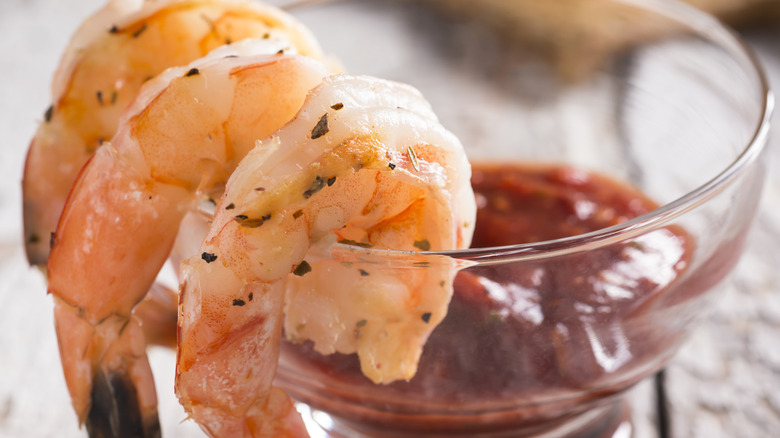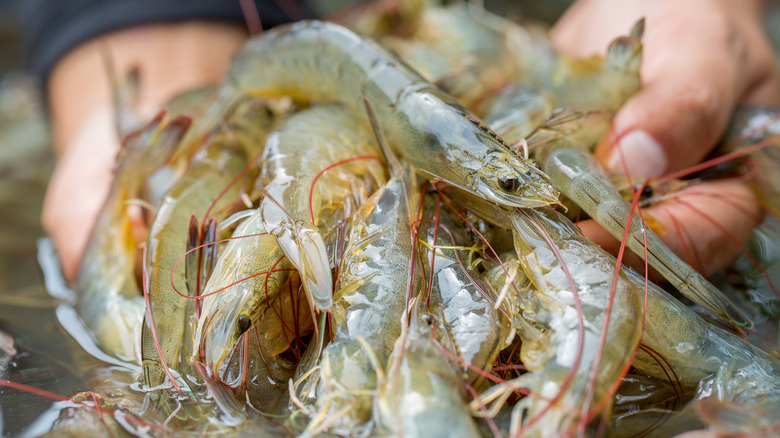The Reason Shrimp Cocktail Is So Expensive
For thousands of years, shrimp has been considered an accessible protein source for coastal communities around the globe. From Indigenous fishers in the Americas to 13th-century Chinese vendors, shrimp has been an unfussy form of sustenance. But it's perishable, so it was only with refrigeration that shrimp became more accessible to U.S. high-class restaurants. Shrimp cocktail, for example, had its heyday as a party appetizer in the 1960s–80s, though it eventually became derided as tacky. But now, it's coming back into fashion — and it's more pricey than ever.
Some high-end shrimp cocktails can run more than $30, making the dish one of the more expensive starters on the menu. And although shrimp prices are lower now than they've been on average over the past decade, at $7.72 per kilogram, they're trending slightly upward.
Partly, inflation and price uncertainty are to blame for why shrimp cocktail can break the bank. As food costs rise due to supply chain interruptions like COVID-19 and Russia's war in Ukraine, the price of dining out has spiked across the board. Harvesting shrimp is also not easy. Plus, a perfect shrimp cocktail isn't an afterthought; it's a carefully crafted dish that, in a still-tight restaurant labor market, takes time and money to produce.
How sustainable 'blue foods' can help keep shrimp cocktail affordable
Without more sustainable aquaculture practices, your next bite of shrimp will only be more expensive — if it exists at all. Worldwide, 900,000 fishermen make their livelihoods by catching shrimp, to the tune of 1.3 tons every year. But some of their trawling practices catch unwanted fish that aren't properly returned to the sea and, according to the World Wildlife Fund, are "one of the most damaging and non-selective fishing methods in the world."
Only about 5% of shrimp are caught by artisanal fishermen using more careful practices; the remainder, sadly, carries side effects that decimate fish stocks and aquatic ecosystems. Even if these practices create a glut of cheap shrimp now, they're not sustainable long-term — and $30 shrimp cocktail is a sign that something is not right.
A new movement focusing on sustainable aquaculture, aka "blue foods," could help the shrimp industry find a balance between price and longevity. Studies have shown a significant potential for fisheries to become more ecological — in ways that can also boost nutrient quality! Even Andrew Zimmern is on board, saying it can help save the planet.
And when farmed shrimp populations increase sustainably, researchers find that prices go down, too. So keeping sustainability in mind doesn't only help shrimp — it helps us next time we're at a steakhouse craving shrimp cocktail, too.

